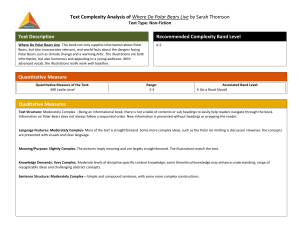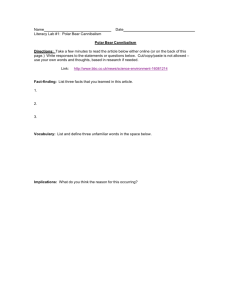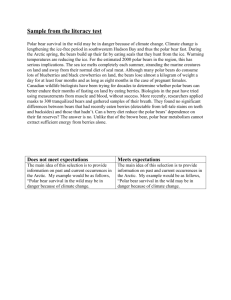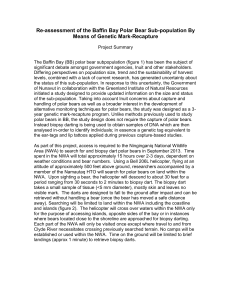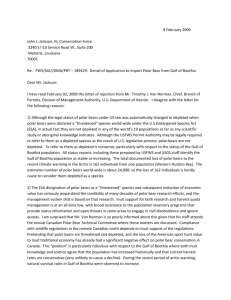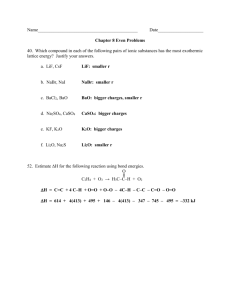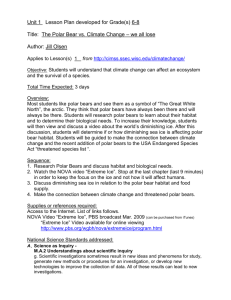Modelling Future Impacts of Climate Change and Harvest on the
advertisement
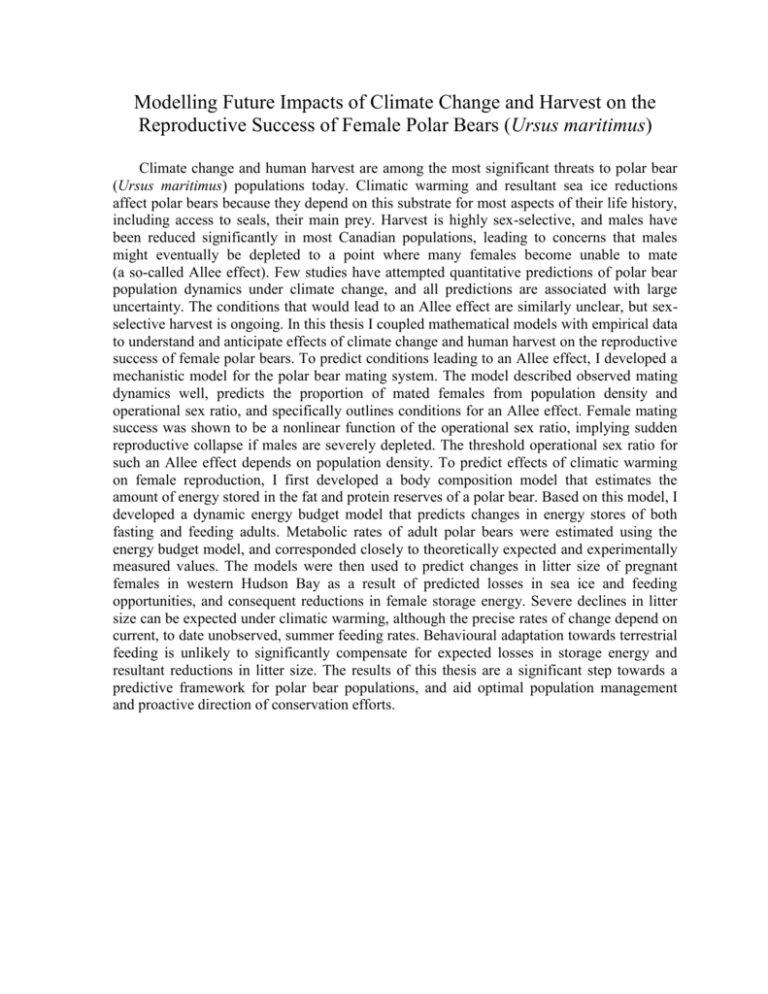
Modelling Future Impacts of Climate Change and Harvest on the Reproductive Success of Female Polar Bears (Ursus maritimus) Climate change and human harvest are among the most significant threats to polar bear (Ursus maritimus) populations today. Climatic warming and resultant sea ice reductions affect polar bears because they depend on this substrate for most aspects of their life history, including access to seals, their main prey. Harvest is highly sex-selective, and males have been reduced significantly in most Canadian populations, leading to concerns that males might eventually be depleted to a point where many females become unable to mate (a so-called Allee effect). Few studies have attempted quantitative predictions of polar bear population dynamics under climate change, and all predictions are associated with large uncertainty. The conditions that would lead to an Allee effect are similarly unclear, but sexselective harvest is ongoing. In this thesis I coupled mathematical models with empirical data to understand and anticipate effects of climate change and human harvest on the reproductive success of female polar bears. To predict conditions leading to an Allee effect, I developed a mechanistic model for the polar bear mating system. The model described observed mating dynamics well, predicts the proportion of mated females from population density and operational sex ratio, and specifically outlines conditions for an Allee effect. Female mating success was shown to be a nonlinear function of the operational sex ratio, implying sudden reproductive collapse if males are severely depleted. The threshold operational sex ratio for such an Allee effect depends on population density. To predict effects of climatic warming on female reproduction, I first developed a body composition model that estimates the amount of energy stored in the fat and protein reserves of a polar bear. Based on this model, I developed a dynamic energy budget model that predicts changes in energy stores of both fasting and feeding adults. Metabolic rates of adult polar bears were estimated using the energy budget model, and corresponded closely to theoretically expected and experimentally measured values. The models were then used to predict changes in litter size of pregnant females in western Hudson Bay as a result of predicted losses in sea ice and feeding opportunities, and consequent reductions in female storage energy. Severe declines in litter size can be expected under climatic warming, although the precise rates of change depend on current, to date unobserved, summer feeding rates. Behavioural adaptation towards terrestrial feeding is unlikely to significantly compensate for expected losses in storage energy and resultant reductions in litter size. The results of this thesis are a significant step towards a predictive framework for polar bear populations, and aid optimal population management and proactive direction of conservation efforts.



